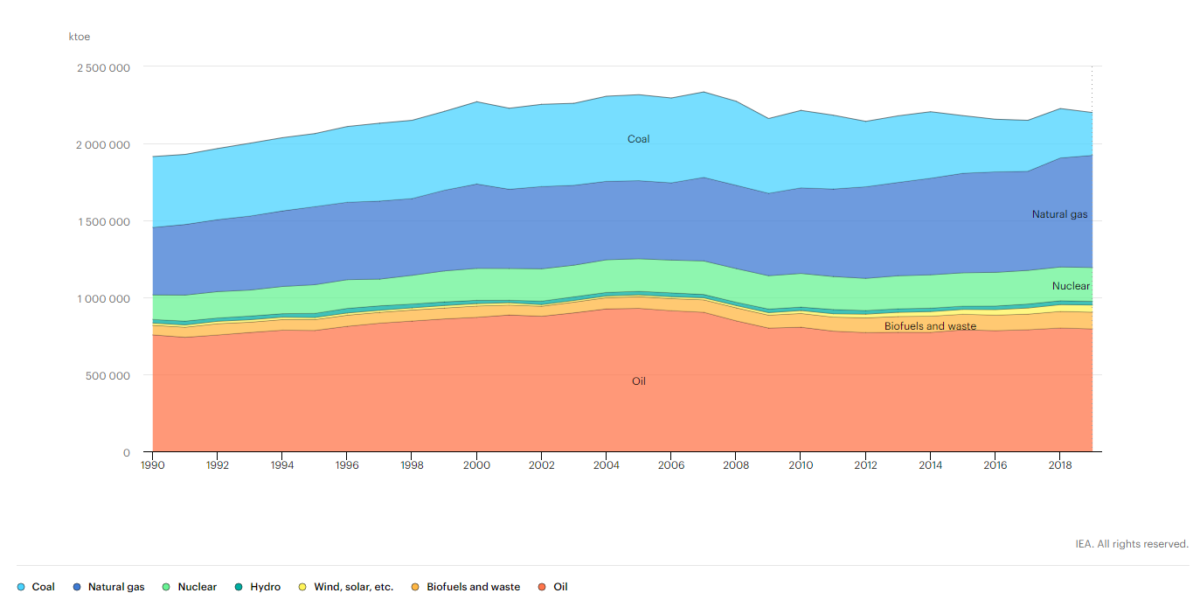The world is currently in an energy transition. Climate change concerns are pushing countries to rapidly adopt cleaner forms of energy. According to the Paris Accord, in order to prevent the worst effects of climate change, total warming must remain under a rise of two degrees Celsius above the pre-industrial baseline. However, a December 2020 report from the United Nations Framework Convention on Climate Change (UNFCCC) indicated that countries are not on track to meet their goals of curbing emissions. There is a clear disconnect between what countries are pledging on doing (lower carbon emissions) and their actual commitments to meeting this goal. The energy transition is difficult for many reasons. First, the technology to fully utilize and implement renewable energy is still relatively new and requires innovation and advancement. More importantly however, countries are trying to balance meeting climate change goals with maintaining their political, economic, and national security priorities. As a result, the question is how to develop policy that aligns climate change goals and national security strategy.
Renewable Energy
Renewable energy is the preferred energy source because it emits no greenhouse gases. One of the biggest issues with renewable energy is that it requires innovation to make it realistic to implement on a mass scale. For example, between planes, ships, and cars, the transportation industry is one of the largest emitters of greenhouse gases and has the lowest penetration of renewable energy. Another example is the military, as the U.S. military emits more carbon emissions than industrialized countries like Sweden or Denmark. Still, renewable energy is the fastest growing energy source in the US. The two largest renewable energy sources in the US are wind and hydroelectric power, comprising approximately 48% of all the renewable energy generated in the U.S. in 2020. Read more about America’s energy choices here.
Alternate Fuels
Alternate fuels encompass a wide range of fuels, from biofuels to cleaner burning fossil fuels like liquid natural gas (LNG). The issue with these fuels is that they still emit carbon, albeit at a lower quantity than “dirty” fuels like oil. These fuels are easier to implement because they are alternative fuels for existing infrastructure and do not require as much innovation as renewable energy. While these fuels are necessary, they can be just as damaging if countries over rely on them, particularly on LNG. LNG is the cleanest burning fossil fuel, but can be a significant source of methane leakage if left unregulated. In April 2021, the Senate, with support from major oil and gas companies, voted to reinstate emissions regulations for LNG. It is important to note that LNG is at best a transition fuel. While it can be used as a stepping stone to get to net-zero emissions, it is not the goal or endpoint of the energy transition.

Total US Energy Supply by Source, 1990-2019, Credit: International Energy Agency
Nuclear Power
Nuclear power plants utilize a process called fission to split atoms, releasing an enormous amount of energy. Nuclear energy accounted for 9% of total US. energy production in 2020. While these plants do not emit CO2 and have the capability to generate far more power than renewable energy, fission reactors produce radioactive waste. Some countries recycle the spent fuel, but this process still results in some level of radioactive waste. Other countries store the waste in repositories either above or below ground. Currently, there are no permanent disposal or storage methods for radioactive waste. Scientists have also been exploring the possibilities of fusion reactors. Fusion occurs when two nuclei are combined. This process produces more energy and less waste than fission and the fuel is more readily available. However, fusion reactions are difficult to control and have not yet produced more power than that required to fuse the nuclei. Read more about ASP’s work in fusion energy here.
Looking to the Future
The key to maintaining American national security during the energy transition is to understand that the technology we have today will not be the technology of tomorrow. America needs to break the link between economic growth and carbon emissions to meet the challenges of the 21st Century.






